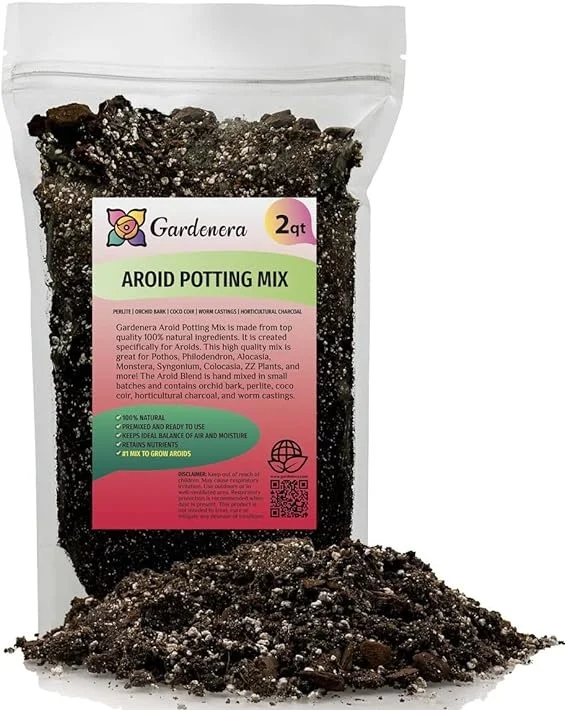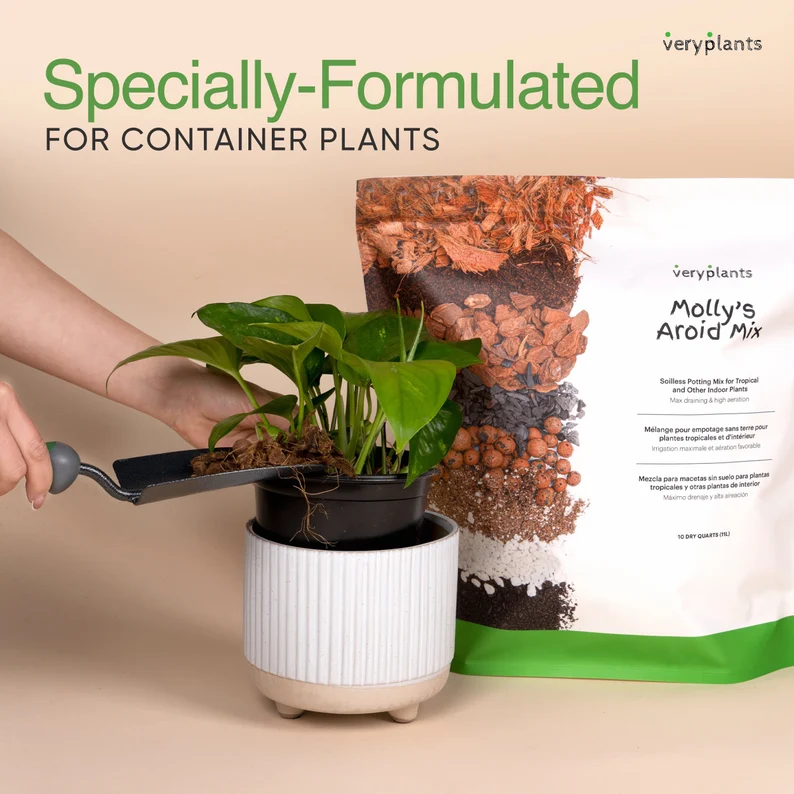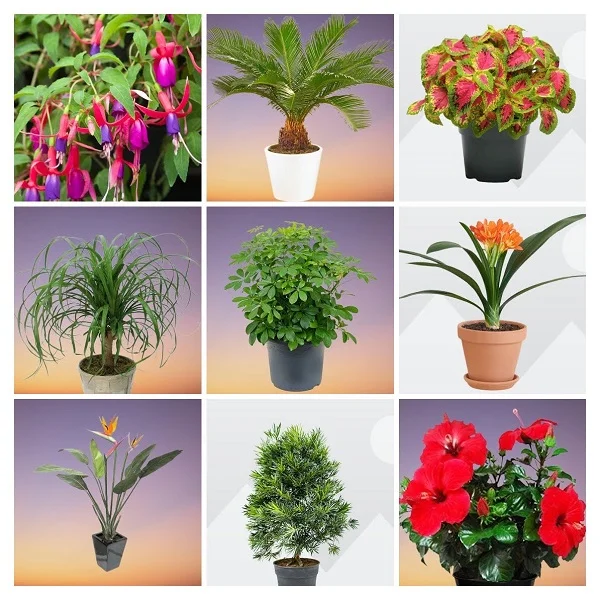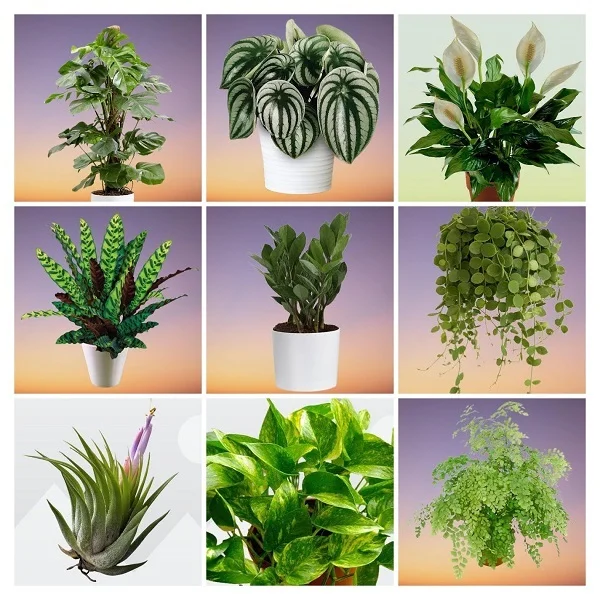Alocasia longiloba Indoor Care, Propagation, Problems and Solutions
Some links in this post may be affiliate links
Alocasia longiloba grows best in bright indirect light, warm and humid conditions and moderately moist, fertile, well-drained soils in addition to monthly feeding in the growing season.
Alocasia longiloba is one of the sought-after Alocasia varieties on account of its large, bluish-green, arrow-shaped leaves with silver margins and veining, held on mottled brown leaf stalks. These coupled with its light-green or purple undersides make it a sight to behold.
Alocasia longiloba was documented in the 1800s by Fredrich Anton Wilheim Miquel in Philippines. The Latin word, 'longilobus' was used in reference to the elongated lobes of the mature leaves.
Due to their spectacular foliage, Alocasia longiloba, Alocasia x amazonica 'Polly' (Alocasia Polly), Alocasia zebrina (Zebra Elephant Ear Plant) and Alocasia micholitziana (Green Velvet Alocasia) are perfect in any plant collection for adding an exotic feel.
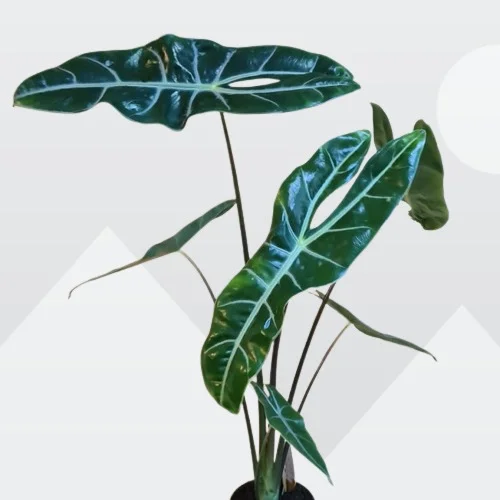
Botanical name: Alocasia longiloba
Family: Araceae
Origin
Alocasia longiloba is native to tropical forests of China and East Asia. It has a widespread distribution in Guangdong, Hainan, and southern Yunnan in China, mainland Southeast Asia, and western and central Malesia.
Size
Alocasia longiloba is a slow-growing, herbaceous plant which grows to a height of 5 feet and 3 feet wide in about 5-6 years. The arrow-shaped leaves can grow to about 1-2 feet long. Based on its size, Alocasia longiloba is one the best plants for a living room where it will create a great first impression.
Flower
The flowers in Alocasia longiloba are held on a spandix which is enclosed in a green to white colored spathe and only last a few days. To conserve the plants energy and direct it to foliage growth, cut the flowers as soon as they appear, though, it is unlikely to flower when grown indoors.
Varieties
Alocasia longiloba is a species complex of closely related Alocasia plants that are very similar making it dificult to diferentiate between them.
Some Alocasia plants that were intially placed in the Alocasia longiloba species complex but are now considered as varieties or types include; 'argyrea', 'korthalsii', 'lowii', and 'watsoniana'.
Is Alocasia longiloba toxic to pets?
Yes. Alocasia longiloba like other Alocasia Plants is toxic to both humans and pets. It contains crystals of calcium oxalate which if ingested can numb and swell the tongue and pharynx leading to difficulty in breathing and sharp pain in the throat. Keep it away from the reach of children, cats, dogs and other pets to avoid any mishaps.
Where to Buy
If you would like to add Alocasia longiloba to your collection, you may obtain them from Etsy (Link to Etsy).
Alocasia longiloba Care Indoors
To care for Alocasia longiloba indoors, provide bright indirect light, average warmth of 18-250C, humidity of 60-70% and moderately moist, fertile, well-drained soils coupled with monthly feeding during the growing season.
Alocasia longiloba care requires regular pruning to keep it neat and also reduce pest and disease infestations. Repotting is only needed when it becomes pot-bound. Continue reading for more on these growing conditions and how to provide them.
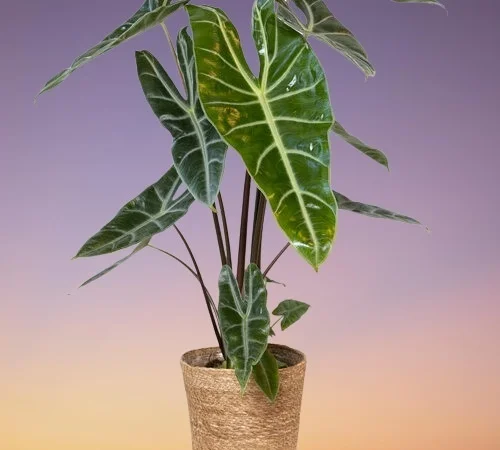
Watering
How often should I water Alocasia longiloba indoors?
Do not water Alocasia longiloba on a schedule to avoid either overwatering or underwatering both of which are disastrous to the growth of the plant.
Water Alocasia longiloba thoroughly in spring and summer and allow the top 2-3 inches of soil to dry out between waterings. Maintain moderately moist soil and avoid overwatering as it can cause yellowing and rotting.
Reduce watering in fall and winter to keep the soil barely moist as growth is slowed at this time. Never allow the soil to dry out completely for a prolonged period as it can signal dormancy to the plant resulting in wilting and yellowing leaves.
Use room temperature, chlorine-free water like rain water or filtered water to avoid leaf spotting.
Do not let the plant sit in soggy soil to prevent root-rot and leaf spot diseases. Use a pot with a drainage hole and well-draining soil to avoid getting soggy soil.
Light Requirements
How much light does Alocasia longiloba need?
Alocasia longiloba thrives in bright indirect light (filtered light). Place it near a brightly-lit window. Keep it away from direct sunlight to avoid scorching; brown marks on the leaves.
Too little light will signal dormancy which may cause the leaves to start dying. Where the natural light is not adequate, you may use grow lights to supplement it.
Occasionally rotate the pot to ensure that the plant gets light on all sides for even growth to prevent lop-sided growth.
Temperature and Humidity
Alocasia longiloba flourishes in an average warmth of 18-250C. Temperatures below 150C may signal dormancy causing the plant to drop all its leaves.
Keep it away from drafts coming from hot air vents, AC units, windy doors and others to prevent sudden changes in temperature which can cause leaf drop, reduced growth and death of the plant.
Alocasia longiloba requires a humidity of 60-70% to thrive. To increase humidity, set the pot on a wet pebble tray, use a humidifier or group the plants together. Ensure that there is good air flow for the plant to prevent fungal diseases.
Potting Soil
What is the best soil for Alocasia longiloba?
The best soil for Alocasia longiloba is a well-draining, aerated soil mix. A blend of peat, perlite, and orchid bark provides the necessary balance of moisture retention and drainage. Avoid dense soils to prevent waterlogging.
Fertilizer
What is the best fertilizer for Alocasia longiloba?
Feed Alocasia longiloba with a balanced, liquid fertilizer every 4 weeks in spring and summer. Stop feeding in fall and winter as the plant undergoes dormancy during this period.
Flush out accumulated salts from the soils every 2-3 months by running a stream of water through the soil until the water comes out through the drainage holes.
Repotting
When to repot Alocasia longiloba?
Alocasia longiloba prefers being pot-bound, therefore, frequent repotting is not needed. Repotting every 2-3 years is adequate. Avoid frequent repotting as the plant takes long to recover from transplanting shock.
Repot into a 1 size larger pot during the growing season (spring and summer) only if the roots have grown through the drainage hole. Use a pot that has a drainage hole to prevent the soil from getting soggy to avoid fungal infestations. Take a look at these beautiful ceramic planters on Amazon.
Pruning & Maintenance
How do you prune Alocasia longiloba?
Pruning Alocasia longiloba is easy; it requires removal of yellow and diseased leaves to maintain the plant neat and to reduce diseases and pests infestation.
Remove the leaves by cutting at the base with a sterilized knife or pair of scissors to avoid disease transimission. Take care not to injure the new leaves that are forming.
Regularly clean the leaves by damp-wiping them with a soft cloth to get rid of dust and discourage pests infestation.
Alocasia longiloba Propagation
How to propagate Alocasia longiloba?
Alocasia longiloba is propagated by plant division at the beginning of the growing season (spring).
Propagating Alocasia longiloba by plant division
- Water the plant thoroughly at least one day before to make it easier to divide and also hasten establishment.
- Carefully remove the plant from its pot and brush off the soil from the roots.
- Gently divide the rhizome into sections by cutting through with a sharp sterilized knife. Ensure that each section has 1-2 stems.
- Fill a small pot with a well-draining soil and moisten it slightly. Ensure the pot has a drainage hole to avoid rotting.
- Position the section in the center of pot in the moist soil at the same depth that they were in the previous pot.
- Place the set up in a warm, well-lit place away from direct sunlight.
- Maintain the soil moist until the new plant is well established after which you can begin routine care.
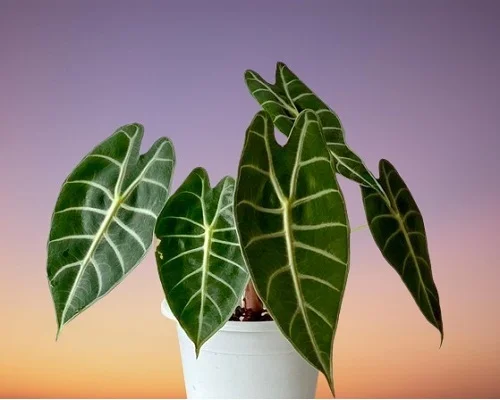
Alocasia longiloba Problems & Remedies
Alocasia longiloba problems are dying plant, yellow leaves, drooping leaves, brown leaf edges, loss of leaf color, diseases and pests. Keep reading for more on these problems and how to fix them.
Dying plant
Alocasia longiloba dying is caused by too little light, underwatering, and cold drafts. These three causes signal dormancy to the plant causing the leaves to begin to die.
Naturally, this happens in winter. However, even if the foliage may die, the underground rhizome is still alive and can regrow when given favorable conditions.
How to fix it
If you do not want your plant to die in winter do the following:
Too little light: Position the plant near a bright window where it will receive bright indirect light or instal a grow light if the natural light is enough.
Cold drafts: Keep it away from cold drafts like drafty windows, windy doors, AC units among others and use a heating mat to maintain a warmth of 18-250C.
Underwatering: Water when the top 2-3 inches of soil feel dry but do not allow the soil to dry out completely.
Yellowing leaves
Why are my Alocasia longiloba leaves turning yellow?
Some of the causes of yellow leaves on your Alocasia longiloba are dry air, overwatering, soggy soil and aging.
How to fix it
Remove such leaves by snipping them off at the base with a clean sharp knife or a pair of scissors.
Dry air: Set the pot on a wet pebble tray or use a humidifier or grow the plant in a well-lit bathroom.
Overwatering: Water only when the top 2-3 inches of soil feel dry. Do not water on a schedule.
Soggy soil: Use well-draining soil and a pot that has a drainage hole.
Aging: It is natural for the old leaves to turn yellow and drop as the plant matures.
Drooping leaves
Drooping leaves on Alocasia longiloba are caused by underwatering, temperature stress, dry air, and spider mites infestation.
How to fix it
Underwatering: Water when the top 2-3 inches of soil dry out but do not allow the soil to dry out completely.
Temperature stress: Keep the plant away from drafts emanating from AC units, heat sources and others to maintain temperatures of 18-250C.
Dry air: Set the pot on a wet pebble tray or use a humidifier to upscale humidity. Group the plants together to create a humid microclimate.
Spider mites infestation: Keep the plant well pruned and increase humidity to discourage the pests.
Brown leaf edges
Brown leaf edges on Alocasia longiloba are caused by low humidity, underwatering and salts buildup.
How to fix it
Low humidity: To raise humidity, set the pot on a wet pebble tray or use a cool mist humidifier.
Underwatering: Water when the top 2-3 inches of soil feel dry but not leave the soilball to dry out completely.
Salts buidup: Flush out the accumulated salts from the soil every 1-2 months by running a stream of water through the soil until it drips through the drainage holes.
Loss of leaf color
Loss leaf color on Alocasia longiloba is due to too little light. Position the plant in a brighter spot or instal a grow light if the natural light is not enough.
Diseases
Alocasia longiloba is prone to leaf spot disease which is enhanced by soggy soil and overwet conditions. It is characterized by dark brown or black leaf spots.
How to fix it
- Remove and burn the affected parts to reduce the risk of spread to the rest of the plants.
- Spray the affected plant with a systemic fungicide and ensure to follow the manufacturer's instructions.
- Keep the plant on the dry side, do not mist it and ensure good air circulation.
- Use a pot with a drainage hole and well-drained soil.
Pests
Common pests in Alocasia longiloba are aphids, mealybugs, spider mites and scales.
How to fix it
- Check underneath the leaves regularly for these pests and take timely control measures.
- Seperate the affected plant to prevent spread to other plants and treat it with neem oil or insecticidal soap as per the manufacturers' recommendations.
- Regularly damp-wipe the leaves with a soft cloth to discourage the pests.
- Keep the plant well pruned to minimize the hiding and breeding places for these pests.
Conclusion
With proper care, Alocasia longiloba can thrive indoors, bringing a striking, tropical appeal to your space. By maintaining optimal light, humidity, and watering routines, you can enjoy its lush foliage for years.
You liked it? Share on social media.
Related Content
Amazon Associates Disclosure
Homeplantsguide.com is a participant in the Amazon Services LLC Associates Program, an affiliate advertising program designed to provide a means for sites to earn advertising fees by advertising and linking to amazon.com.
